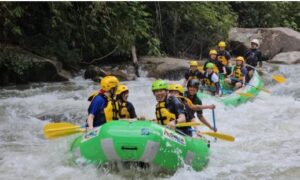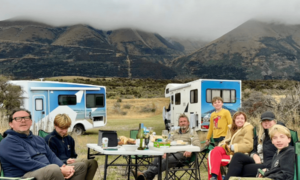Introduction
Packing and organizing your backpack efficiently can make a significant difference in the comfort and convenience of your travels. It allows you to have easy access to all your essentials while keeping the weight of your pack balanced and manageable.
Tips to help you pack and organize your backpack
Here are some tips to help you pack and organize your backpack like a pro.
1. Make a list. Before you start packing, it’s essential to make a list of all the things you will need for your trip. This will ensure that you don’t forget any important items and also help you stay organized.
2. Choose the right size backpack: As mentioned earlier, choosing the right size backpack is crucial for both comfort and organization. A good rule of thumb is to opt for a backpack with a capacity of 30–50 liters, depending on the duration of your trip.
3. Use packing cubes or compression bags: Packing cubes or compression bags are great tools for organizing clothes, toiletries, and other small items in your backpack. They not only save space but also keep everything in place during transit.
4. Pack strategically: When packing, think about what items you will need most frequently during your trip and pack them towards the top or front of your bag for easy access. Items that are less frequently used can be packed at the bottom or back of the bag.
5. Utilize every inch: To maximize space in your backpack, roll instead of folding clothes when possible, stuff socks inside shoes, and use empty spaces such as inside shoes or hats to pack smaller items like chargers or sunglasses cases.
6. Keep liquids separate: To avoid any spills or leaks inside your bag, always pack liquids, such as toiletries, in waterproof bags or containers.
7. Distribute weight evenly: It’s important to distribute weight evenly throughout your backpack to prevent discomfort and strain on one side of your body. Heavy items should be placed closer to your back, while lighter ones can go towards the outside.
8. Use the outer pockets: Many backpacks come with outer pockets and compartments that can be utilized to store items like water bottles, snacks, or rain gear for quick access.
9. Don’t overpack: It’s tempting to try and fit everything into your backpack, but remember that you will have to carry it around for extended periods. Only pack essentials and avoid overpacking to keep your load manageable.
10. Re-evaluate and re-organize as needed: As you travel, you may find that certain items are not being used or that other things are missing. Take some time every few days to re-evaluate and re-organize your backpack so that it remains efficient throughout your trip.
Budget-friendly options for backpackers
As a backpacker, one of the most important considerations when choosing your travel gear is your budget. Backpacking trips can quickly become expensive, so it’s crucial to find budget-friendly options that still meet your needs as a traveler. In this section, we will explore some affordable alternatives for backpackers who are looking to save money without sacrificing quality and functionality.
Firstly, let’s talk about backpack brands. While big-name brands may seem appealing due to their reputation and popularity, they often come with a hefty price tag. Fortunately, there are plenty of lesser-known brands that offer high-quality backpacks at a fraction of the cost. Brands like Osprey, Kelty, and Teton Sports have gained recognition in the backpacking community for their durable and well-designed packs that won’t break the bank.
In terms of size and capacity, opting for smaller packs can also help reduce costs. It may be tempting to choose the largest pack possible to fit all your belongings in one bag, but keep in mind that larger packs tend to be pricier. Instead, consider packing light and investing in a smaller-sized pack that can still comfortably hold all your essentials.
Another way to save money on your backpack is by choosing materials wisely. While leather or waterproof materials may seem like ideal choices for durability and protection against the elements, they usually come at a higher cost. Opting for nylon or polyester material can significantly reduce the price without compromising on quality.
Additionally, features such as suspension systems or adjustable straps are commonly found on premium backpacks but may not be necessary for every traveler. Consider whether you really need these extra features before purchasing, as they can add up quickly to the overall cost.
Purchasing second-hand or renting gear is another excellent option for budget-conscious travelers. Many outdoor stores offer rental services where you can borrow a high-quality backpack at a fraction of its original cost. Alternatively, websites such as eBay or Craigslist offer a wide selection of used backpacks that are still in good condition and can be purchased at a discounted price.
While it may be tempting to splurge on an expensive backpack, there are plenty of budget-friendly options available for backpackers. By considering alternative brands, size and capacity, materials, features, and rental or second-hand options, you can find the perfect pack that meets your travel needs without breaking the bank. Remember to prioritize functionality over brand names and design when looking for a wallet-friendly backpack so you can have an enjoyable and budget-friendly backpacking experience.
Conclusion
As we have explored, choosing the right backpack for your travel style is crucial to ensuring a comfortable and stress-free trip. Whether you prefer a lightweight daypack or a heavy-duty hiking backpack, there are countless options available that cater to different needs and preferences. By considering factors such as size, features, and durability, you can find the perfect backpack that meets all your travel requirements.



































